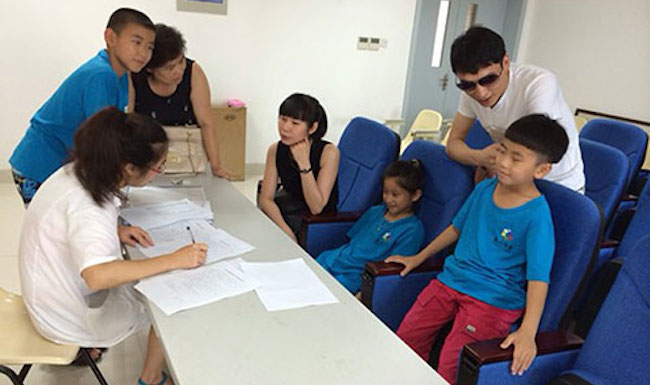
AsianScientist (Apr. 7, 2011) – A Phase II clinical trial for the treatment of a severe form of eye disease, geographic atrophy (GA), is the first study to show the benefit of a therapy to slow the progression of vision loss.
Age-related macular degeneration, or AMD, is a leading cause of vision loss in Americans age 60 and older. It is a disease that causes cells in the macula – the part of the eye that allows us to see in fine detail – to die.
There are two forms of the disorder, wet and dry AMD. GA is considered the end stage of dry AMD, where central vision is lost.
According to the National Eye Institute, dry AMD occurs when the light-sensitive cells in the macula slowly break down, gradually blurring central vision in the affected eye.
Using a neurotrophic factor called ciliary neurotrophic factor (CNTF), the multi-center research team, including Kang Zhang of the University of California, San Diego, Shiley Eye Center, found that long-term delivery of CNTF served to re-nourish the retina and retard the loss of visual acuity.
In results that were published in the Proceedings of National Academy of Sciences (PNAS), high-dose CNTF was delivered to 27 GA patients using encapsulated cell therapy (ECT). Another 24 patients received either a sham surgery (12) or a low-dose of CNTF (12).
Implanted at the back of the study subject’s eye, the genetically engineered cells continuously produced CNTF over a 12-month period.
At the 12-month point, there was a statistically significant difference in the change of the total macular volume in participants’ eyes, and all but one of the patients in the high dose group, or 96.3 percent, maintained stabilized vision, compared to only 75% of the patients in the sham-treatment group.
The patients treated with a high dose of CNTF also showed an increase in retinal thickness as early as four months after implant, an increase that correlated to the stabilization of vision.
These results may open the door to long-term treatment of dry AMD, using a simple surgical procedure, and provide hope to nearly one million Americans suffering from GA.
Zhang’s research is partially supported by the Chinese National 985 Project to Sichuan University and West China Hospital.
The article can be found at: Zhang K et al. (2011) Ciliary neurotrophic factor delivered by encapsulated cell intraocular implants for treatment of geographic atrophy in age-related macular degeneration .
———
Source: University of California – San Diego.
Disclaimer: This article does not necessarily reflect the views of AsianScientist or its staff.












